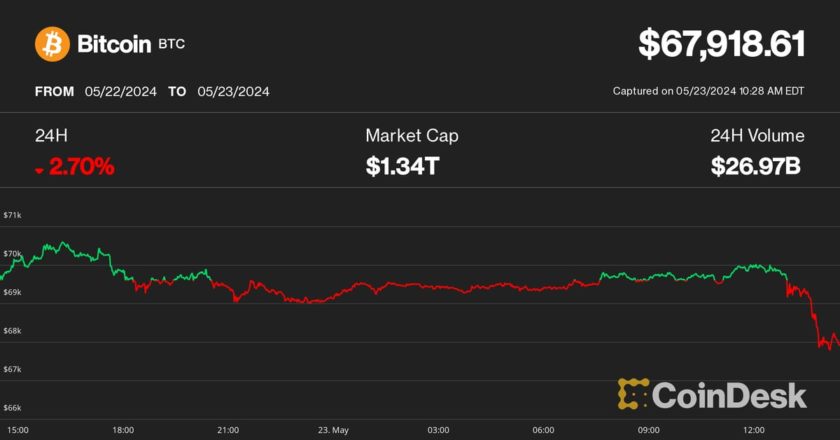It’s a new decade with an old problem for law enforcement officials: How do you stop cybercriminals from stealing billions of dollars in cryptocurrency and using it for illicit purposes? These kinds of criminal activities range from selling illicit drugs, firearms, documents, identities and ransom schemes, to flat out stealing assets — more than $40 billion was noted as fraudulent in the first nine months of 2019, according to a Chainalysis report.
The report highlights that illicit activity doubled from 0.04% in 2018 to 0.08% in 2019. While this percentage is still small, some in the crypto community note that it may not properly reflect true illegal activities. Dean Karakitsos, co-founder and CEO of Bloxy, a blockchain analytics company, discussed the latest findings with Cointelegraph:
“The Crypto Crime Report does not determine an evident method on how it calculates the size of the darknet markets in terms of users. Assumptions support that darknet, in general, is a marketplace that all transactions in there are illegal and are happening between criminals using cryptocurrencies. A black box approach. That means any hidden network that runs Tor to protect users against censorship and participants transact in cryptocurrencies that market is part of darknet and participants are called criminals.”
While the black box approach creates a dispute surrounding the data’s efficacy, cryptocurrencies used in terrorism impacts not only the victims but also threatens entire countries and their populations — not to mention the harm on the cryptocurrency brand. These include fundraising, illegal drug and arms trafficking, cyber-attacks and the illicit transfer of funds, according to a recent RAND study.
In her report “How Terrorists use Encryption, the Darknet, and Cryptocurrencies,” Nikita Malik highlights major trends in how terrorists use these entities to their advantage. Terrorists use encryption to hide tools intended to recruit new members, including propaganda and location data. Cryptocurrency is then used to evade detection while conducting fundraising activities to carry out the terrorist plot.
She points out that cryptocurrencies offer the same benefits of “hawala” networks that terrorists have used for years to transfer money. These trust-based networks provide the secrecy and anonymity that lets these organizations function under the radar. The movement of assets via exchanges allows these organizations to brazenly fundraise without fear of significant retribution.
While the risk of terrorist funding using cryptocurrency is becoming more apparent, governments are rapidly acknowledging the value in developing knowledge about digital currencies. As the G-7 points out, provide “innovative potential of the underlying technology.” Darknet activities can eventually be easily traced and detected when law enforcements gain a better understanding.
An established market
At the conclusion of 2019, there were at least 49 active dark markets, so both users and vendors are not short on choices for darknet activity. In an interview with Cointelegraph, Lory Kehoe, co-founder of a government-backed advocacy group Blockchain Ireland, noted:
“Darknets are bouncing back after aggressive take-downs in 2018, and as their revenue climbs, their crypto receipts would logically also be on the increase. I’m a huge advocate for regulation in this sector. Furthermore, existing rules do not fit digital currencies, and it is entirely incumbent on states to engage in constructive dialogue to ensure that crypto is treated legitimately and can be operated with robust oversight.”
When it comes to terrorism funding, the most recent example of how sophisticated terrorist groups are in conducting cryptocurrency campaigns is evidenced in the 2019 campaign by the Izz ad-Din al-Qassam Brigades.
This military wing of Hamas, which is considered by many western countries to be a terrorist organization, conducted one of the largest and most sophisticated cryptocurrency-based terrorism financing campaigns ever seen. The campaign — which included three sub-campaigns — provided donors with several options on how to donate and has reportedly generated tens of thousands of Bitcoin (BTC) for the organization.
How can law enforcement help curtail the use of cryptocurrencies for terrorist activities? There is no clear answer. While the problem of criminals finding a way to use new technology and systems for illicit purposes is not new, the threat of terrorist organizations finding more ways to leverage cryptocurrency in the quest to radicalize and fund their deadly organizations looms large.
The United Nations Security Council Counter-Terrorism Committee notes the critical mechanism development needed for law enforcement to effectively save lives. For prosecution and effective law enforcement, these mechanisms will need to properly transcribe and transfer the necessary paper trail, something public blockchains can provide.
Exchanges play a critical role in combatting terrorism in this sector by being able to trace transactions to fiat endpoints. Cooperation with law enforcement, combined with federal and international regulations, will help ensure that terrorist activities related to digital currency are quickly identified and dealt with by the appropriate authorities. Dr. Wulf Kaal, principal at Kaal.io, discussed the reason for the uptick with Cointelegraph:
“As it becomes easier to onboard or exit, small scale criminal activity, ransoms etc are increasing proportionally. I have not seen a correlation dataset but as the increases in ransom hacking attacks, for example, are associated with the use of cryptocurrencies.”
When it comes to the future of cryptocurrency and darknet activities, it must be noted that CBDC’s will severely restrict terrorists’ abilities to move in and out of fiat currencies. Meanwhile, the overarching control of blacklists will remain in the control of governments, and those cryptocurrencies were created to replace such centralized control in the first place.




